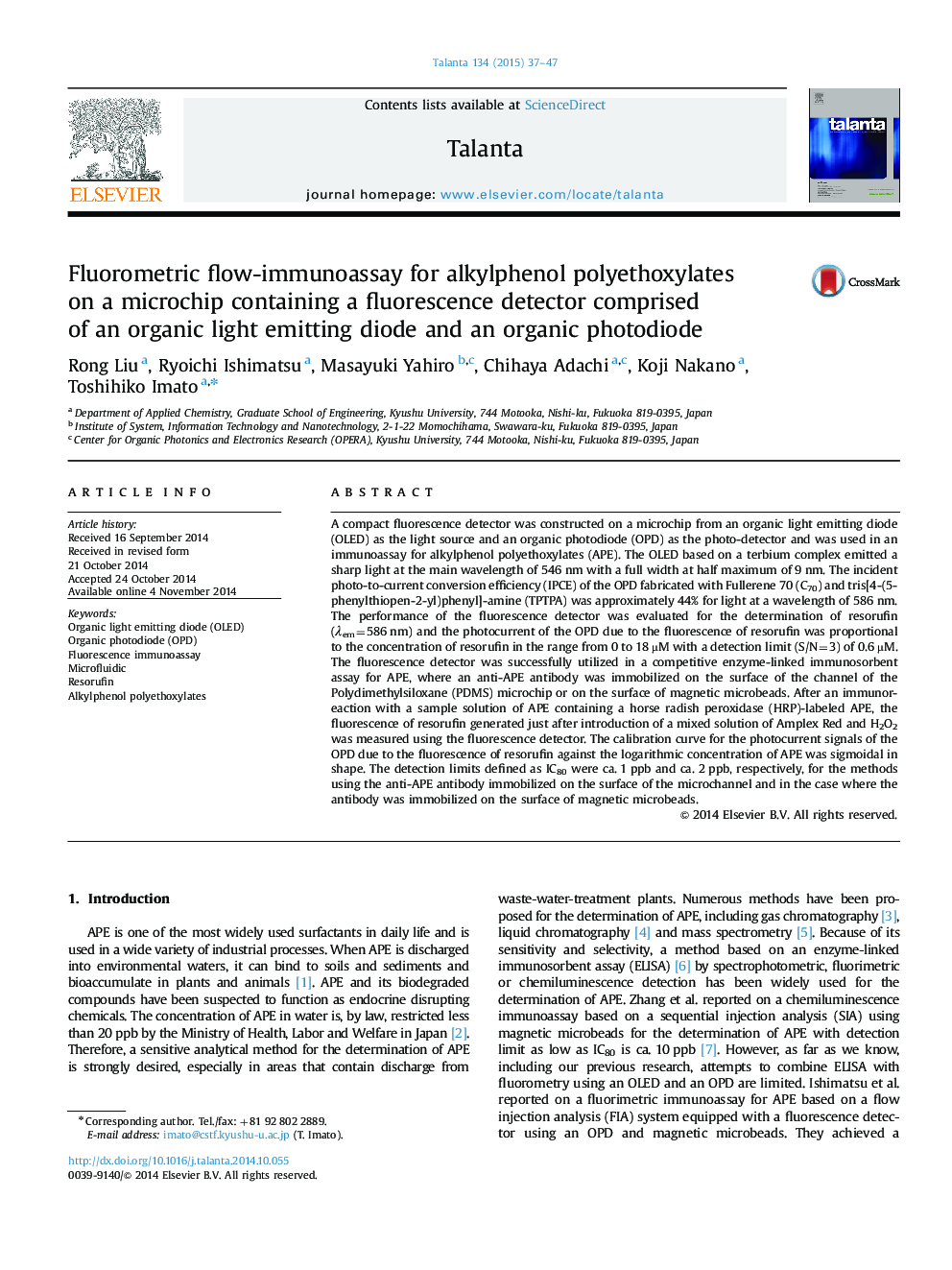| Article ID | Journal | Published Year | Pages | File Type |
|---|---|---|---|---|
| 1244049 | Talanta | 2015 | 11 Pages |
•A compact fluorometric detector was assembled with an OLED and an OPD.•The OLED based on Tb(acac)3bath as the emitting layer provides a narrow green emission spectrum.•The OPD with higher photosensitivity was obtained by using the bulk heterojunction of C70 and TPTPA.•The developed fluorometric detector was applied to competitive immunoassays for APE.
A compact fluorescence detector was constructed on a microchip from an organic light emitting diode (OLED) as the light source and an organic photodiode (OPD) as the photo-detector and was used in an immunoassay for alkylphenol polyethoxylates (APE). The OLED based on a terbium complex emitted a sharp light at the main wavelength of 546 nm with a full width at half maximum of 9 nm. The incident photo-to-current conversion efficiency (IPCE) of the OPD fabricated with Fullerene 70 (C70) and tris[4-(5-phenylthiopen-2-yl)phenyl]-amine (TPTPA) was approximately 44% for light at a wavelength of 586 nm. The performance of the fluorescence detector was evaluated for the determination of resorufin (λem=586 nm) and the photocurrent of the OPD due to the fluorescence of resorufin was proportional to the concentration of resorufin in the range from 0 to 18 µM with a detection limit (S/N=3) of 0.6 µM. The fluorescence detector was successfully utilized in a competitive enzyme-linked immunosorbent assay for APE, where an anti-APE antibody was immobilized on the surface of the channel of the Polydimethylsiloxane (PDMS) microchip or on the surface of magnetic microbeads. After an immunoreaction with a sample solution of APE containing a horse radish peroxidase (HRP)-labeled APE, the fluorescence of resorufin generated just after introduction of a mixed solution of Amplex Red and H2O2 was measured using the fluorescence detector. The calibration curve for the photocurrent signals of the OPD due to the fluorescence of resorufin against the logarithmic concentration of APE was sigmoidal in shape. The detection limits defined as IC80 were ca. 1 ppb and ca. 2 ppb, respectively, for the methods using the anti-APE antibody immobilized on the surface of the microchannel and in the case where the antibody was immobilized on the surface of magnetic microbeads.
Graphical AbstractFigure optionsDownload full-size imageDownload as PowerPoint slide
